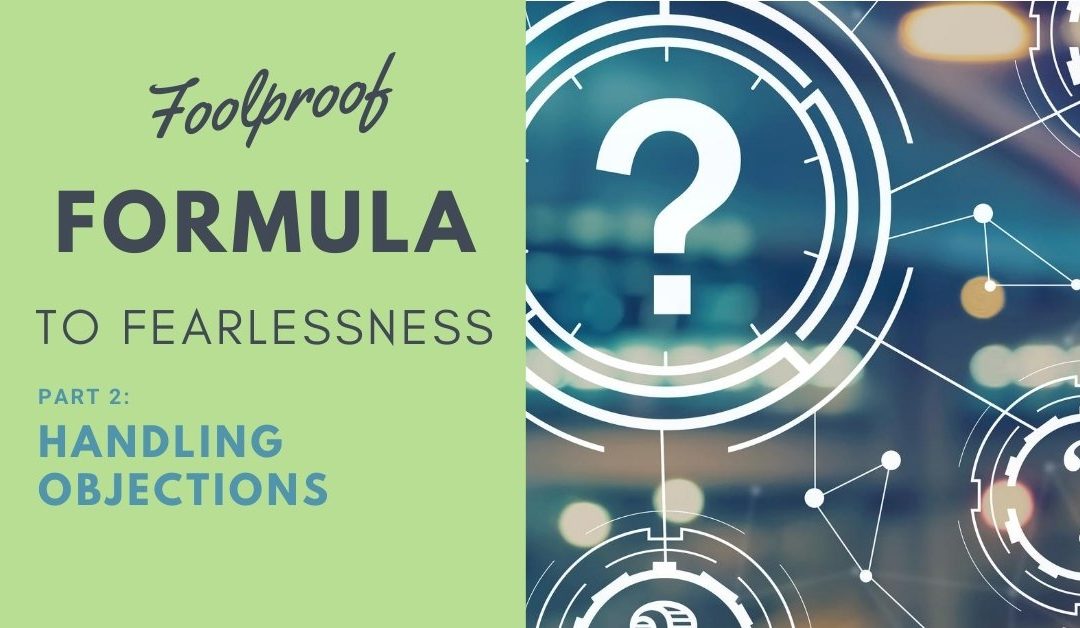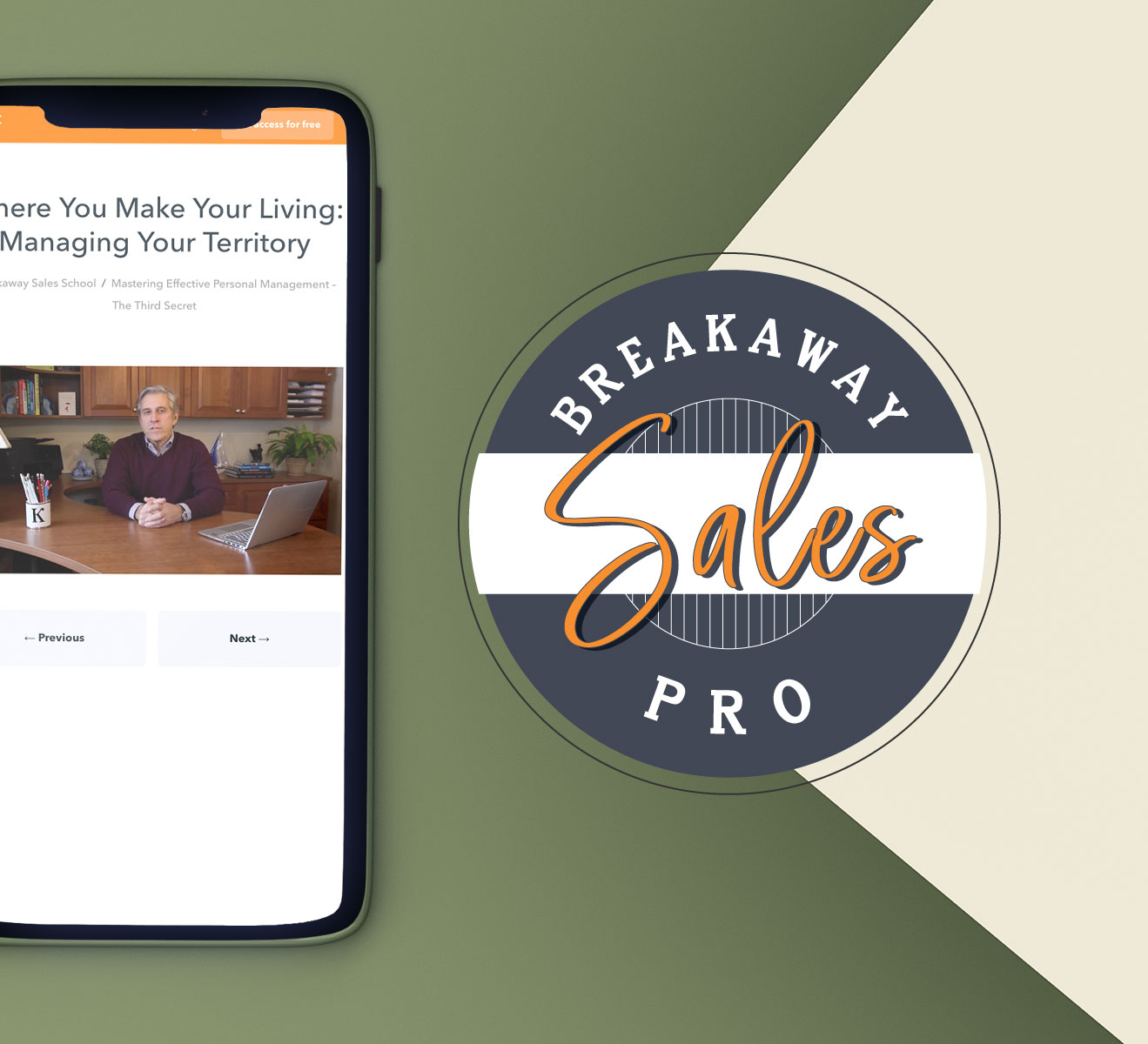Previously I shared the four big reasons prospects make objections – No trust, no need, no help, no hurry. Today let’s break these concepts down into some real-world how-to, practical application and share some personal experience.
Making The Sophisticated Sale
Several years ago I was leading a sales force selling a complex ERP software solution – think SAP or Oracle, a solution that essentially helps run an entire organization. Our target prospects were mid-size, smaller manufacturing companies of $100-$200 million in sales. Our clients would spend as much as half a million with us in software and maybe another million in services. With deals as high as $2 Million, these were more than three-call-close deals. We enjoyed high and wide selling that usually involved the CEO and management team, down to the operations personnel that help run the business each day. Selling involved a series of discoveries, presentations, and overcoming all kinds of different objections along the way. A sale might take 6 months or more, with 20 critical sales calls. Every aspect of the structured sales cycle, from a strong opening to seeing each opportunity for the close, was important.
1. Surfacing The Objection
A valuable skill I developed among all my salespeople on our team was to surface the objection – don’t want for it to show up. In surfacing the objection, you look to uncover all the obstacles that could get in the way of the sale. This is the essence of the Ben Duffy sales technique, where you put yourself in the place of a prospect and name the issues they might be having even if they haven’t yet shared them. Do this by saying, “You know if I were you, I’d be concerned about this, this, and that. You’re going to invest a million dollars or more in this solution, I’d want to make sure these things were worked out.”
This lets you command the discussion about solutions, before the prospect even makes their objections. It indicates your empathy and self awareness, and helps connect you to the prospect, helping them understand that you get it.
2. Know The Competition
In those days, we had a common competitor in a company called JD Edwards, that sold something similar to what we did. They were a capable company and sales force, and we respected them. At the end of a particular sales process with a high profile prospect, it was us vs them. After 6 long months and 20-some sales calls and countless presentations, we felt pretty good about where we were, confident we could close this sale – but we waited for the nod. Finally we got a call – not the call – the prospect would like us to come in, they’d like to talk some things over.
A call like that, at this time in the process, usually means there are some issues or we lost the deal. I had a sick feeling it was the latter. But I was familiar enough with JD Edwards to know where their strengths were and how their sales process might be impacting our own. This helped me think like my customer.
3. Moving the sale forward, not backward
Finally we sat down together with their leadership, and the customer said look, you guys are great, we think you’re top notch. But.
There was the inevitable but.
But, they said, we’re going to go with JD Edwards. The reason, they said, was because a specific part of their software system fit their situation better than ours did.
The gut reaction many salespeople have in this situation is to start back-pedaling and retro-fitting their solution to fit the objection. You can almost hear it, coming in a panic – “But we can do that too! But we can do that ever better!” That’s not the way forward in a situation like this. Instead, acknowledge the validity of the objection. Then ask questions.
4. Ask and Listen to Understand
I started asking – and listening – to understand. Tell more, I said. Can you be more specific? I asked. I took a position that, at this phase of the process, I’d earned the right – and trust – to engage. We’d both invested a lot of time in this together – let’s be sure of the right next steps. Then I repeated what I was being told, acknowledging that I was understanding the issues.
If you can explain someone’s point of view back to them better than they can do it themselves, they’ll really trust you. They’ll feel connected and respected, which is going to calm things down as opposed to escalate to disagreement, which is where backpedaling usually gets you.
Finally I said, “You believe JD Edwards is better for you not so much because all of the applications are better, but one application specifically is better, and these three or four related issues. Do I have that right?” Then I asked, “If this specific problem could go away, would you feel differently about the decision?”
This brings us back to surfacing objections. Get everything out in the open. Is there anything else getting in the way of the sale? Is it truly this thing? Because you want to be confident that if that one thing can be addressed, you can come to an agreement together.
When the customer assured us it was this one thing alone, I acknowledged the issue. “Shame on us for not being closer to what you needed on that, because if we work together you need to be totally confident in our abilities there.” Again – no defensiveness, and certainly no bruised ego. I want the customer to understand I get it. I’m on your side here.
Then I asked for a little more time. “Before you make your final decision, would you give me 48 hours to pull my team together, make sure we totally understand what you need, and come back to you with more ideas to consider or that we’re just not the right fit?” Again, I’m leaning on the value of our mutually invested time together, and that the prospect wants to make the right decision here. I also didn’t promise I’d come back with some pie in the sky scenario just to win the deal. I was equally as honest with them – I wanted to see what we could work out, or indicate to them that we weren’t the right fit so they could be confident in the decisions they ultimately make on this important decision.
5. Move to (Soft) Close
We weren’t quite done with that meeting. Before we left, I introduced a soft close. I ended the call by again affirming their position. “We started this call with you of the opinion that another choice was the better choice than us. You thought that for this one specific reason, agreeing that everything else about our proposal looked good. And we’re going to come back in 48 hours with some ideas about that one issue. If I come back in a way that solves this issue, is it reasonable to assume we could go forward?
Make sure you aren’t wasting your time with the extra effort. If their mind is made up, give them another chance to tell you. If it isn’t, and they’re excited about what you might come back with in 48 hours, you have inertia on your side! In fact you’ve just made a sale of a kind – you’ve sold them on stretching this conversation out to learn more how you can respond. They started the conversation thinking they were saying thanks but no thanks, and instead they’re willing to listen for 2 more days. That’s a win.
The customer appreciated the work we’d done together, and that we weren’t pushy or salesy. My objective with them was never to argue, and certainly wasn’t to demean our competition. I approached the objection professionally, optimistically, realistically, and rationally. Prospects appreciate that kind of approach.
6. Avoid Inauthenticity
I want to be clear that I’m not recommending an objection response I hear all to often, which is fake empathy and pretend compassion. This kind of thing gets coached all the time, and it’s a mystery why because sales prospects smell it from a mile away. Avoid saying things like, “Thank you for that feedback, you know other people have felt that way before and we find that when they evaluate it more closely they actually find blah blah blah.” Don’t tell your prospect they’re wrong, or patronize them into thinking they just haven’t examined things closely. See things from their perspective, be honest, be inquisitive, and earn the right to have honest conversations together. Get to know your competition, the industry you’re in, what each stakeholder in the sales relationship is looking for. Anticipate needs, questions, issues and objections.
In the end, we made the sale. Given a few days, we were able to not only adjust our value, but point out how our solutions were superior. It was a testament to the relationship we’d be built over months of sales meetings that our customer not only gave us the additional opportunity, but kept us engaged. Remember – relationships, level-headedness, curiosity and honesty are usually your best allies in making sales.




